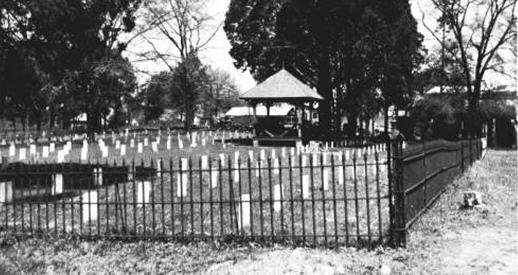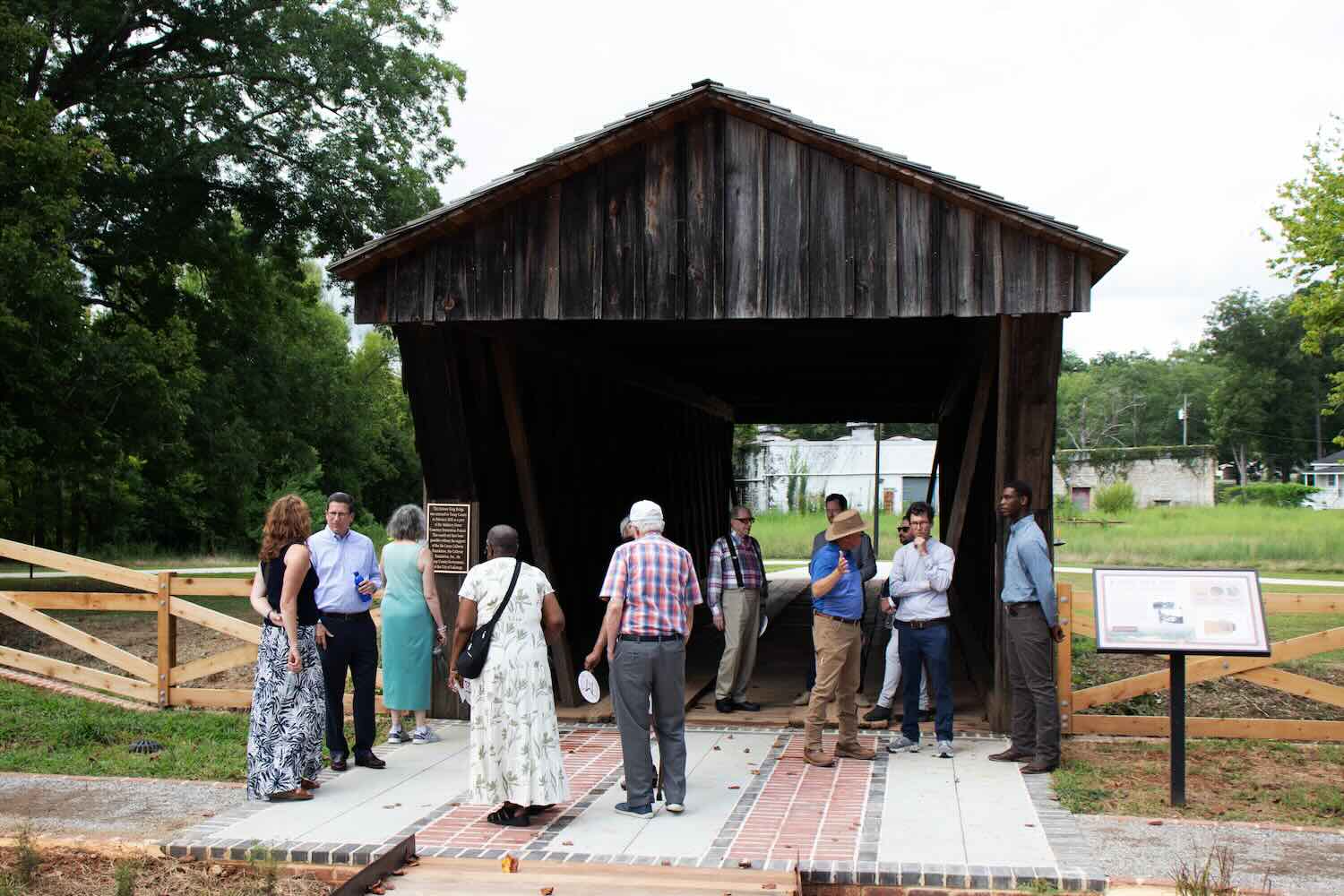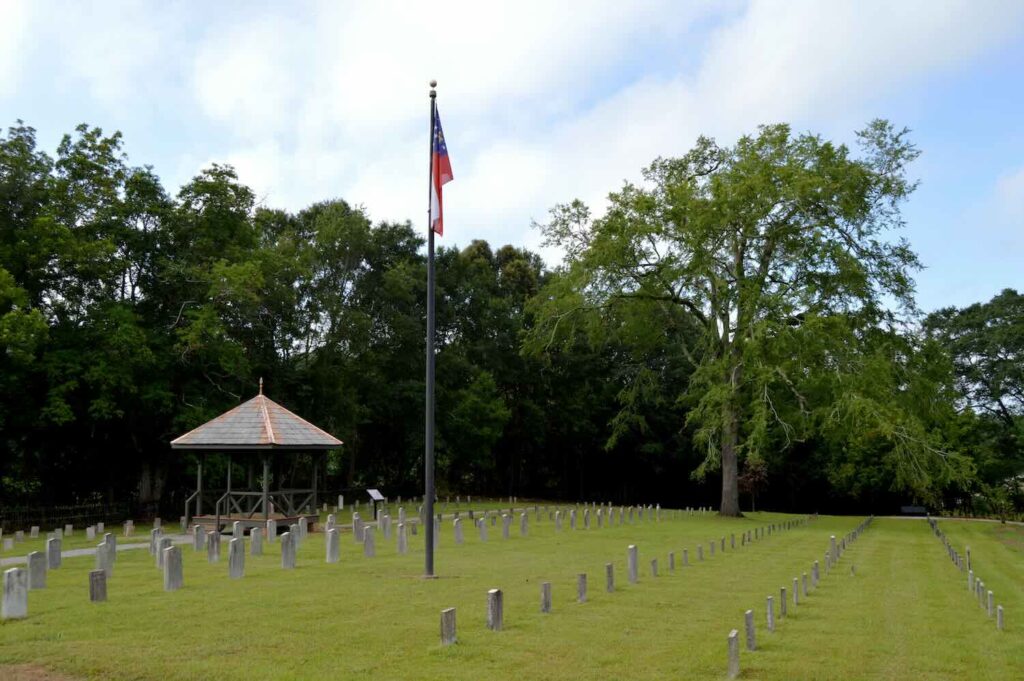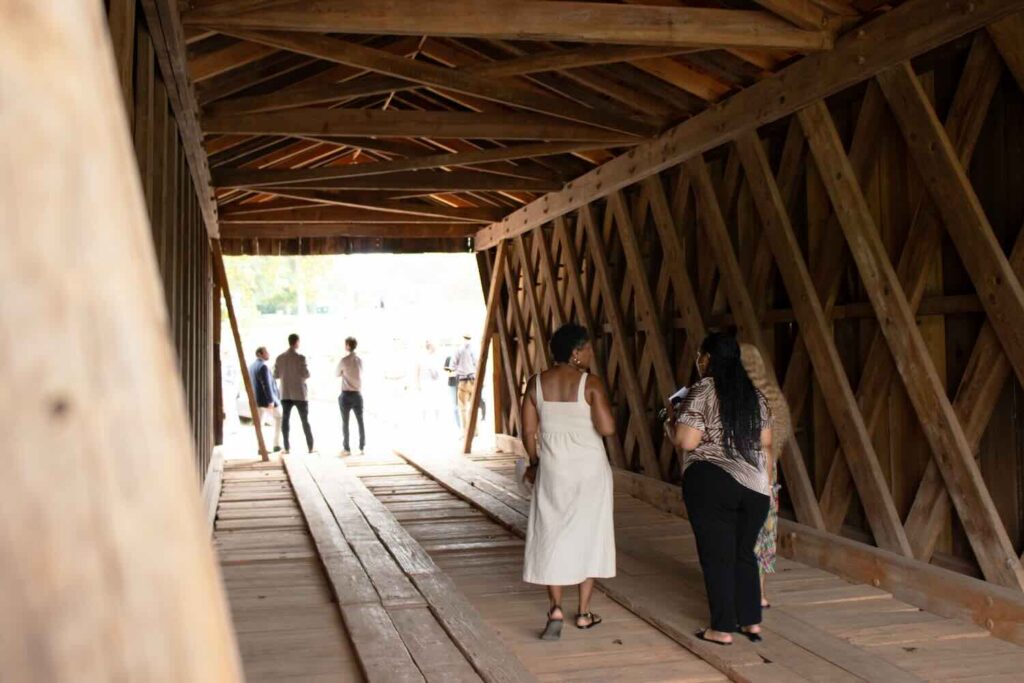The Mulberry Street Cemetery Complex is a historically significant site that uniquely encompasses Confederate-era graves alongside the burial sites of African Americans from the late 19th century.
The Mulberry Street Cemetery Complex served the people of LaGrange and the broader South from 1863 through at least the 1930s. The oldest section is the Stonewall Jackson Confederate Cemetery, where soldiers from all thirteen Southern states are interred. During the Civil War in the fall of 1863, as the Union Army advanced on Chattanooga, Tennessee, Confederate hospitals under the direction of Dr. Samuel H. Stout were evacuated and relocated to several Georgia towns, including LaGrange. Five hospitals were established in LaGrange—Cannon, Law, Oliver, St. Mary’s, and Receiving & Distribution—retaining the names they had in Chattanooga. Although their exact locations are unknown, contemporary accounts describe churches and downtown buildings being converted into medical facilities, including Smith Hall at LaGrange Female College (now LaGrange College). Many of the wounded treated in these hospitals had arrived via the Atlanta & West Point Railroad, having been injured in battles around Atlanta between 1863 and 1864. It is likely that the hospitals were relocated again in late 1864.

The wrought iron fence surrounding the cemetery originally enclosed the courthouse square in downtown LaGrange from the 1800s until 1902. It was relocated to this cemetery site before the new courthouse opened in 1904. (That courthouse was destroyed by fire in November 1936.)
The original fencing from the Confederate soldier cemetery was repurposed in 2025 during the revitalization of the cemetery.
To the west of the Confederate Cemetery fence lie eight unmarked graves believed to be those of hospital orderlies, possibly enslaved individuals. A few marked graves are also found in this area. Additionally, approximately 425 graves are located to the west and south of the Confederate Cemetery. The identities of those buried there, including names and dates, have been lost to history. These individuals are believed to have been African Americans who died between 1865 and the early 1900s. Some were interred in vaults, while others appear to have been paupers buried in cloth wrappings.
In 2015, a joint project by the City of LaGrange and the Troup County Historical Society used ground-penetrating radar to identify the unmarked graves. These graves may once have been marked with simple wooden crosses or fieldstones. In 2016, permanent metal discs were installed to mark each burial site. On April 12, 2016, the LaGrange City Council officially designated the site as the Mulberry Street Cemetery.
The most notable person buried here is Horace King, the renowned 19th-century bridge builder and legislator. He and his son Marshal, who died in 1879, are both interred at this site. Horace King died in 1885, and other members of the King family are believed to be buried nearby.



Do You Know Someone Who Is Buried Here?
WE NEED YOUR HELP
Hundreds of unmarked gravesites line the grassy hillside of Mulberry Street Cemetery. Thanks to ground penetrating radar, we know the locations of these sites; however, we do not know the identification of these individuals. Please contact Troup County Archives if you have information about individuals who may be buried here.